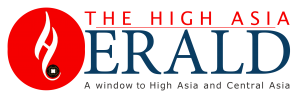“If you feel pain, you’re alive. If you feel other people’s pain, you’re a human being.”– (Leo Tolstoy)
By Karim Muhammad Khan
The State is symbolized as a mother, whereas citizens are depicted as its children as the former always feels the pain of the latter and tries its best to relieve the sufferings. And the suffering is alleviated through a social and legal contract between the state and the citizens.
Pakistan celebrated the Golden Jubilee of its 1973 constitution on 10th April 2023 after completing 50 years of its adoption. The constitution is the living document and an instrument of social contract between the citizens and the state. It also aims to fulfil people’s aspirations by guaranteeing their fundamental rights. Articles 8 to 28 in Chapter 1 of the Constitution deal with all fundamental rights provided to the citizens. Article 38 of the Principle of Policy of the Constitution says the State must secure the social and economic well-being of the people irrespective of sex, caste, creed, or race, by raising their standard of living, by preventing the concentration of wealth and means of production and distribution in the hands of a few; provide for all citizens facilities for work and adequate livelihood… basic necessities of life, such as food, clothing, housing, education, and medical relief; reduce disparity in the income and earnings of individuals.
The constitution has declared Pakistan as a welfare state but unfortunately, successive regimes both civilian and military have failed to eradicate poverty; educate its youth; develop a skilled labour force, and facilitate its citizens’ access to basic healthcare facilities.
For example, the World Bank portrays a gloomy picture of Pakistan. The WB report on Global Hunger Index has ranked Pakistan at 92 out of 116 countries; 72 million Pakistani are food insecure which means that they don’t fulfil their dietary requirements.
Moreover, Article 25-A- of the Constitution guarantees free education to all children of age bracket (5 to 16) but 25 million children are still out of school. The aforesaid data is a clear indication of the State’s apathy and negligence by our elite rulers toward fulfilling their constitutional obligations.
Social and governance crises
Inflation has reached new heights breaking records of the last 50 years and pushing 110 million people below the poverty line. Millions of educated youths are becoming jobless, and thousands are emigrating to foreign countries as opportunities for jobs are shrinking; investors are afraid of investing due to political instability, power crisis, and security situation.
Exports have come to a standstill and import bills are on the rise widening a huge gap between the balance of payments with trading partners; a major chunk of the GDP is spent on non-development expenditure and debt servicing; the budget deficit is increasing; successive governments resort to borrow money from national, international, and multinational financial institutions to fill the fiscal gaps.
Similarly, the elite landed aristocracy, real estate mafia, MNCs, business tycoons, industrialists, bureaucrats, generals, judges, and media houses are also consuming the national exchequer lavishly by availing perks, privileges, subsidies, tax exemptions, and bank loan write-offs; allotment of properties and indulge in rampant corruption.
However, some cosmetic and ad-hoc strategies for poverty reduction were introduced such as BISP and Ahsas cash programmes, opening langar khanas, and by distributing free atta (four) among the poorest of the poor and destitute. These policies are not sustainable or helpful in reducing poverty. Rather it creates a lethargic attitude among the masses and at the same time it hurts their self-esteem and dignity as well.
On the other hand, Article-14 of the Constitution has guaranteed that every citizen’s dignity must be taken care of at any cost. Hence, the provision of free support in terms of cash and materials could eventually increase the begging rather than labouring force. In this regard, a famous maxim goes, “Give a man a fish and you will feed him for a day; teach a man how to fish and you feed him for a lifetime.”
Nevertheless, there are vital lessons for our ruling elite to learn from other countries in the region and how they uplifted their citizenry from below the poverty line. For example, China brought out 800 million people from below the poverty line five years before its target; Bangladesh which was once part of Pakistan before 1971 has also made significant progress in the human development index with an amazing success story in poverty reduction. According to a World Bank report, Bangladesh was once the poorest country in its early ages, but it grabbed the status of a lower middle-income nation in 2015 and the journey of its progress is going on due to its visionary, vibrant, and empathetic leadership with good governance.
One of the major sources of wealth generation in Bangladesh was the higher growth rate of the ready-made garment factories (RMGF) that accommodated a huge chunk of the underprivileged population, especially women. World Bank report in 2021 revealed that Bangladeshi women’s share in labour force is 37% as compared to 25% of Pakistani women’s participation in economic activities.
RMGF is now a major source of foreign exchange earnings in Bangladesh as around $29 billion worth of manufactured goods are exported annually and that is contributing to the economic growth of the country as well.
Way forward
The only way to reduce poverty in Pakistan is to bring structural changes in the economic and governance system, introduce redistribution of wealth and resources, drastically cut non-productive expenditure, and introduce a progressive taxation system. Devise viable sustainable policies for the welfare of the common masses.
Secondly, induct the right person at the right place in all ministries and line departments with strict accountability, transparency, and performance evaluation mechanisms in place linking their progression and promotion with performance.
Thirdly, there must be a check on misuse of authority in financial and human resource management and be penalized as per the law, and relevant rules.
Moreover, all types of malpractices, corruption, professional dishonesty, nepotism, favouritism, red-tapism, black marketing, adultery, profiteering, and smuggling must be curbed with an iron hand irrespective of social status, ethnic or geographical affiliation, creed, and colour.
Good performance of heads of departments and employees should also be acknowledged and rewarded to encourage honesty and productivity.
Next, vibrant agriculture policies are critical as the land is fertile with a suitable climate to produce double and even triple crops in a year that could not only feed the population throughout the year but can be a vital source of earning foreign exchange. Alongside small, medium, and large-sized manufacturing industries, the establishment of high-tech value-laden software industries is crucial that could generate employment opportunities and shore up foreign exchange reserves.
Furthermore, a substantial increase should be made in the budget for education increasing it from 1.7% of GDP to 10%, curriculum at the school and tertiary level need to be revamped and designed on scientific lines by integrating modern technologies, innovative ideas, technical and vocational skills, injecting STEM projects, initiating entrepreneurship concepts and ICT programmes to catch up with modern labour market requirements.
Ultra-poor families should also be assisted with targeted subsidies in food items with the provision of free quality education to their children along with free health care amenities. Finally, the physical feature of Pakistan is unique with its amazing scenic beauty; four colorful spectacular seasons; having gigantic mountain ranges in the north with the largest mass of glaciers outside poles; mesmerizing beauty of pristine lakes with lush green pastures the gifted bounties of Nature. In addition to that rich and diverse cultural heritage and archeological sites such as Indus Valley Civilization are some of the worth-seeing places that could attract tourists from inland and abroad. In short, the government can exploit its strategic location by creating tourist-friendly policies; ensuring safety measures, and developing modern infrastructure to promote tourism as a potential source of income generation for poverty alleviation.

Karim Muhammad Khan is a teacher trainer currently serving as Principal of Government Boys Higher Secondary School Nomal, Gilgit. He contributes essays to High Asia Herald pages on social issues with a focus on education.

The High Asia Herald is a member of High Asia Media Group — a window to High Asia and Central Asia
